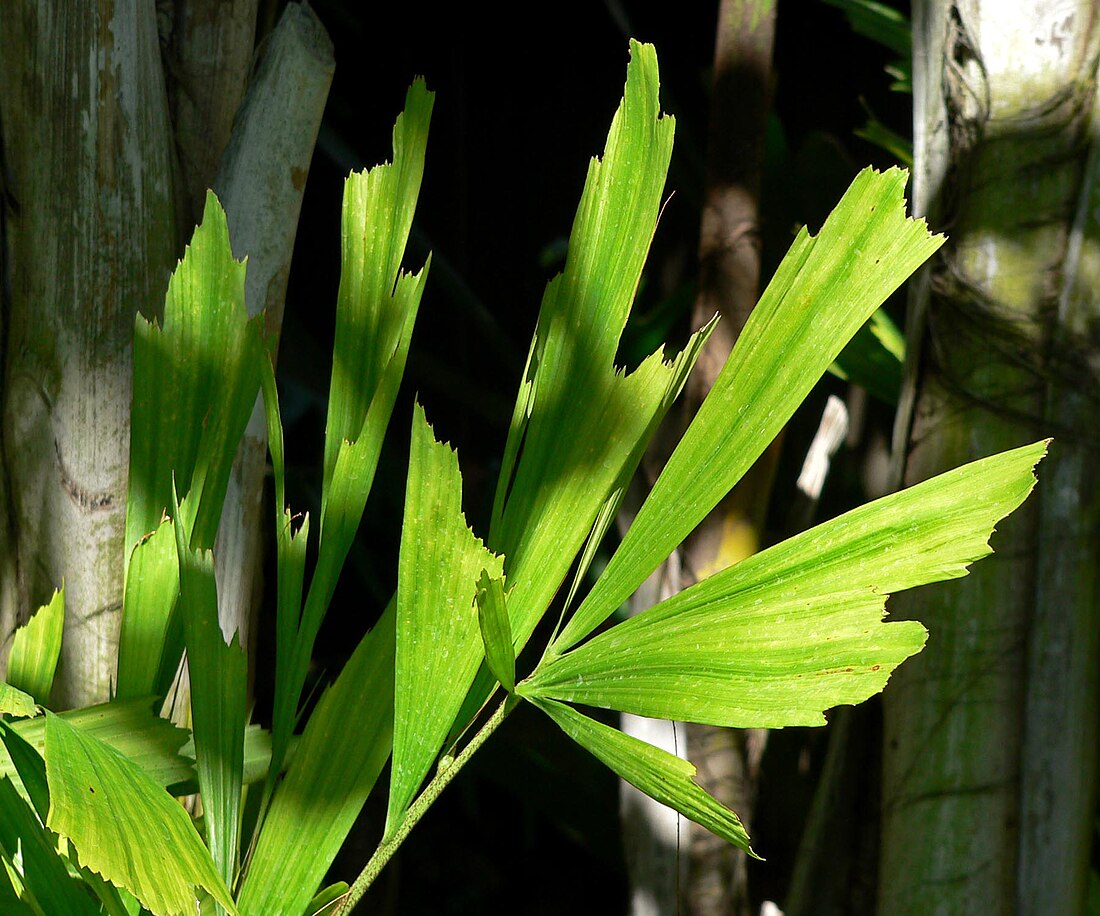Top Qs
Timeline
Chat
Perspective
Caryota mitis
Species of palm From Wikipedia, the free encyclopedia
Remove ads
Caryota mitis, known as the clustering fishtail palm or fishtail palm, is a species of palm native to Tropical Asia from India to Java to southern China, now sparingly naturalized in southern Florida and in parts of Africa and Latin America.[3][4][5][6][7] The species was originally described from Vietnam in 1790.[8] In Florida, it grows in hummocks and in disturbed wooded areas.[9]

Remove ads
Botany

Caryota mitis has clustered stems up to 10 m (33 feet) tall and 15 cm (6 inches) in diameter.[10] Leaves can be up to 3 m (10 feet) long. Each leaf is made of many pairs of leaflets shaped like tail fins that give this palm its name.[11]
Flowers are purple and grow on hanging spikes.[11] Its fruits turn dark purple or red when they are ripe, they are harmful to humans.[8][12] The tree slowly deteriorates not long after it bears fruit.[11]
Remove ads
Uses
Cultivated mainly as an ornament plant in Cambodia, where it is named tunsaé töch, traditional healers burn the heaps of felted hairs from the leaves' axils to treat ill limbs of patients.[13]
Its trunk pith can be extracted to make a kind of flour that has similar properties like sago.[11]
In Cochinchine, Vietnam, this plant were used as a wedding gate in the past before 2000s
Toxicity
The fruit of C. mitis is saturated with raphides, sharp, needle-shaped crystals of calcium oxalate. The raphides are strong irritants that cause damage and later itching upon contact with skin, and if ingested, the mouth. This is a result of the physical structure of the raphides, and not any chemical reaction.[14]
Gallery
- Plant
- Characteristic of the grouping of trunks
- Phyllotaxis
- Fruits
References
Wikiwand - on
Seamless Wikipedia browsing. On steroids.
Remove ads








